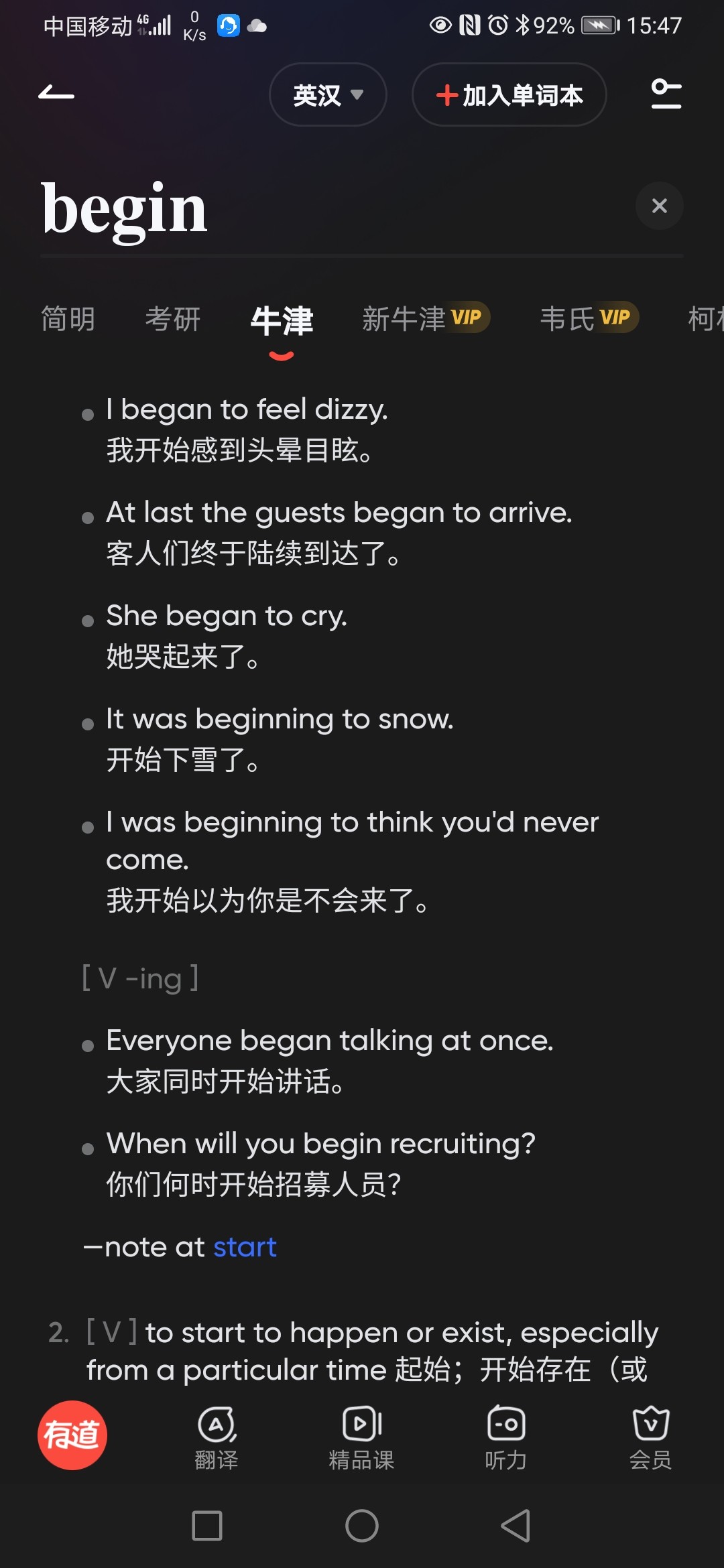3 请教关于单词Begin使用
最佳答案 2021-02-25 16:40
begin to do一般译为"开始做```',用于表示主语之前没做这件事
eg;After finishing the homework,he began to watch TV.
begin doing 一般译为”开始(继续)做”,用于表示主语之前就在做的某件事,中间有小小停顿,现在继续开始做.
eg;He was doing homework when the telephone rang ,it was mother,after answering it,he began working again
begin doing 多注重于直接开始做某件事,而begin to do 是多注重于重一种状态过度到另一种状态
一般来说,begin to do和begin doing可以互换,但在以下三种情况下,用to do:
1.主语不是指人,而是it等.如:It began to rain.
2.begin后接表示心理活动的词.如:begin to know
believe,wonder,think等.
3.begin本身是ing形式,为避免重复后接to do
即,beginning to do
P.S.
doing 一般有正在做的意思
to do一般有正准备做的意思
所以doing 就是开始做了to do开始要做,还没做
另外和begin类似用法的还有start:
start doing 和start to do的区别
1)当我们谈论一项长期的或习惯性的活动时,用doing形式的情形较多。
How old were you when you first started playing the piano? 你最初弹钢琴的时候有多大?
*比较She sat down at the piano and started to play. 她在钢琴前坐下开始弹了起来。
2)start 的进行时态之后,不用doing形式。
①I was starting to get angry. 我开始发火了。
②I am starting to cook the dinner. 我正要开始煮饭。
3)在 start 之后出现的动词涉及感情或思想(如 understand, realize等)时,只可用不定式。
①She started to understand what he really wanted. 她开始明白他真正想要什么。
②She started to wonder why he was here. 她开始觉得奇怪为什么他会在这儿。
4)当主语是物不是人时,要用不定式。
请先 登录 后评论
荣仕翰
-
- 1 关注
- 1 收藏,2696 浏览
- 学英语 提出于 2021-02-25 15:54
相似问题
-
 《高考英语备考1号·速效编》
《高考英语备考1号·速效编》
-
 《高考英语备考1号·写作编》
《高考英语备考1号·写作编》
-
 《高中英语晨读晚记》
《高中英语晨读晚记》
-
 《高中英语错题笔记》
《高中英语错题笔记》
-
 《零起点考大学英语》
《零起点考大学英语》
-

 我查看牛津词典中关于单词begin的使用,单词后面有跟不定式的,也有跟分词的,我自己找不出什么情形下使用不定式,何时使用分词。请指教。
我查看牛津词典中关于单词begin的使用,单词后面有跟不定式的,也有跟分词的,我自己找不出什么情形下使用不定式,何时使用分词。请指教。